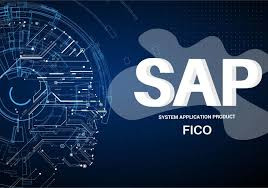
What is SAP?
SAP is a leading enterprise resource planning (ERP) solution that provides end-to-end business management tools for organizations across various industries. Known for its scalability and flexibility, SAP is widely adopted by top-tier organizations such as the Big 4 accounting firms, multinational corporations (MNCs), and mid-level companies. Its comprehensive suite of applications enables businesses to streamline operations, improve efficiency, and drive innovation. From financial management to supply chain optimization, SAP offers a unified platform that supports complex processes and helps organizations stay competitive in a rapidly evolving market..
Who is this course for?
- Freshers with BCom, CA, or any finance/accounting-related degree
- Professionals looking to boost careers in accounting and finance
- Anyone determined to excel in the corporate world
What You'll Learn
- Map the accounting structure of a company in SAP.
- Create a company code.
- Create and assign fiscal year variants.
- Define currencies.
- Setup document types and number ranges.
- Utilise and explain posting keys.
- Configure and test validations and substitutions.
- Create and maintain general ledger accounts.
- Maintain exchange rates.
- Maintain bank master data.
- Define house banks.
- Create and reverse general ledger transfer postings.
- Post cross-company code transactions.
- Create profit centres and segments.
- Clear an account.
- Use document parking.
- Define and use a chart of accounts.
- Maintain tolerances.
- Maintain tax codes.
- Perform postings with document splitting.
- Parallel accounting with the accounts and ledger approach.
- Create and maintain vendor accounts.
- Post and reverse invoices and payments and use special GL transactions.
- Manage partial payments.
- Block open vendor invoices for payment.
- Configure and use the payment program.
- Define the customising settings for the Payment Medium Workbench.
- Create a payment medium using the PMW.
- Use the debit balance check for handling payments.
- Set up dunning and execute dunning.
- Define terms of payment and payment types.
- Explain the connection of customers to vendors.
- Understand integration with procurement.
- Create special GL indicators and post with special GL indications.
- Create and maintain customer accounts.
- Post and reverse invoices and payments and use special GL transactions.
- Manage partial payments.
- Define terms of payment and payment types.
- Explain the connection of customers to vendors.
- Set up correspondence and send periodic account statements.
- Understand integration with sales and distribution.
- Create special GL indicators and post with special GL indications.
- Create and maintain chart of depreciations and the depreciation areas.
- Create and maintain asset classes and asset master data.
- Configure and perform FI-AA business processes in the SAP System.
- Create Asset Acquisition and Retirement Transactions.
- Perform Intra Company and Intercompany Asset Transactions.
- Understand Account Determination and Integration with General Ledger.
- Create Asset Under Construction Assets and Settle to Fixed Assets.
- Setup valuation and depreciation.
- Perform periodic and year-end closing processes.
- Explain and configure parallel accounting (with the accounts solution).
- Perform month and year-end closing in Financial Accounting (exchange post provisions etc.) .
- Create balance sheet and profit and loss statements.
- Monitor closing operations using the Financial Closing Cockpit.
- Post accruals with accrual documents and recurring entry documents.
- Manage posting periods.
- What is Fiori?.
- Problem swith ECC GUI.
- Fiori Design Principles.
- Types of Fiori Applications.
- Login and password reset.
- Home screen, Tile and Business groups.
- User personalization.
- Zoom in, zoom out.
- Object Page.
- My Inbox.
- Export data to excel file.
- View settings.
- Save as tile option.
- Search via Object page.
- Search via Home page.
- Global search.
- Advance apps.
- What is Fiori Apps Library?.
- How to find the use and features of an app?.
- How to search for a business role or app?.
- How to assign business roles.
- Fiori Role concept.
- Customize and assign catalogues.
- Customize and assign Fiori groups.
- Configure a new PFCG business roles.
- Correct Business Role.
- Activate UI application.
- Activate OData services.
- Browser history.
- GUI transaction testing.
- What is S/4HANA Embedded Analytics?.
- Query Browser.
- ECC customer master model.
- ECC vendor master model.
- S/4HANA business partner model.
- S/4HANA business partner approach.
- BP advantages.
- BP simplification.
- How to create a Business Partner in GUI and Fiori Launchpad.
- Standard roles for maintaining customer and vendor.
- Customer and vendor specific views in BP.
- How to search for a BP.
- BP settings.
- Blocking a BP.
- BP relationship overview.
- Relationship customizing.
- One-way and two-way relationships.
- Customer Master Tables.
- Vendor Master Tables.
- BP Tables.
- BP roles.
- BP role categories.
- BP views (BUSD).
- BP number range and Grouping.
- Customer number range assignment.
- Vendor number range assignment.
- Master data synchronization.
- CVI customizing check report.
- FI Integration with CO module.
- CO Org units.
- Define Controlling Area.
- Assign Company Code to Controlling Area.
- Analyse the various types of Cost Elements.
- Create Cost Elements for GL accounts.
- Define, Create, and Configure Cost Centers.
- Define and Create Cost Center Hierarchy.
- Create Organizational Chart for Profit Centers.
- Execute Profit Center Reports.
Trainer Expertise
This program is monitored by a team of professionals. We have crafted this program using the learnings of 23+ years of experience handling corporate training and job oriented training. Our students are working in almost all top MNCs across India.
Job Opportunities
100% placement record — each student successfully transitioned into a desired SAP career role.
Course Duration
16 Weeks
Fees
Training + Job Assistance: ₹35,000
- Admission: ₹10,000
- After 1 month: ₹25,000

